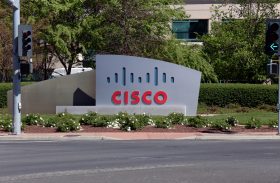Splunk Revenues Jump 30%

Splunk Inc. (NASDAQ: SPLK) credited its adoption of a cloud-based “Data-to-Everything Platform" for exceeding Wall Street’s expectations in its latest quarterly earnings report last night.
For the period ended October 31, 2019, the vendor scored $626 million in revenue, up 30 percent year-over-year. Income per share was 58 cents.
Additionally, Splunk acquired 440 new enterprise customers and several public-sector ones who signed “eight-number” contracts.
Investors applauded Splunk in morning trading, boosting the share price to $137.69, up +$10.98 (8.67%).
Hop On the Platform
Splunk is moving fast to serve the general enterprise shift to cloud services. The company has adopted a “multi-tenant cloud-native platform” approach, in which multiple services are integrated in a complex mix-and-match menu fashion, with pricing based on "the more you use the more you save."
Splunk is just one in a series of high-profile companies to use the platform model to describe — and market — the complicated and nuanced fabric of data-munching, cloud-based services evolving as part of the new IT. To cite just a couple of examples: SD-WAN was acknowledged as a key platform at the recent MEF conference in Los Angeles. And Citrix recently presented its platform at another event.
While the platform approach carries Splunk further away from its roots as “just another SIEM (security information and event management) company,” it brings it closer to more formidable rivals such as IBM, Microsoft, and VMware.
In It to Win It
To keep ahead of competitors, Splunk has more than doubled its R&D spending over the last couple of years, and now has twelve research sites around the world. And what Splunk can’t make it will buy: Last August, Splunk spent approximately $1.05 billion in cash and stock to buy SignalFx, a software-as-a-service (SaaS) company that specializes in real-time or streaming cloud monitoring and data analytics. Then for an undisclosed sum in September 2019, Splunk purchased Omnition, another SaaS startup specializing in distributed tracing, or monitoring the performance of applications that use microservices.
SignalFx and Omnition are just two of Splunk’s growing collection of acquisitions, but they are the two most significant, because with them Splunk hopes to extend its analytics and security products to include orchestration and automation.
Integrating these technologies is essential to the company's new pricing plan, because they will act as the basic draws for many other add-ons. Responding to questions last night, CEO Doug Merritt finally summarized the strategy as a “multi-product, high-attach, continued-growth-lever journey that we are looking forward to.”
The Cash Catch
Like other vendors shifting their pricing from traditional “perpetual” software licensing to a “term and cloud” annual recurring revenue (ARR) approach, Splunk is taking losses in operating cash flow. This is due to customers paying in smaller increments instead of in large sums up front. For the current fiscal year, Splunk expects to show negative cash flow of $300 million, and execs say it will take another year and a half or so for operating cash flow to turn positive. But executives claim the uptick will be nearly $1 billion.
Regardless, the enthusiasm and focus of Splunk’s management team was hard to miss last night. “We believe data is the answer to many of the world’s most pressing problems and its greatest opportunities,” said CEO Merritt. “From improving corporate performance to optimizing government responsiveness to fighting crime to medical research to firefighting or to the rollout of Porsch’s new electric car, we believe every problem’s a data problem, and our customers think so too.”
















